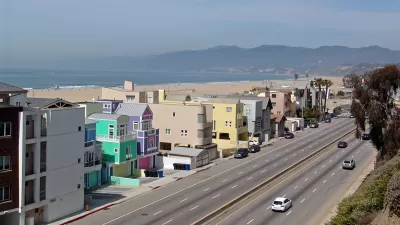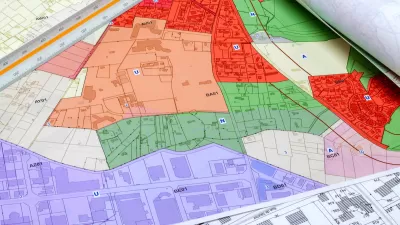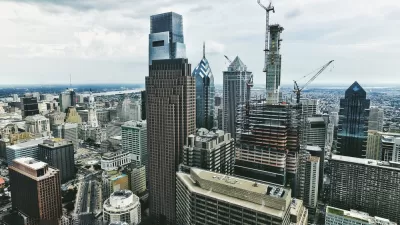Many local leaders spoke strongly against President Trump's decision to withdraw the United States from the Paris Climate Accords, but local land use and transportation policies still sorely lack any consideration of climate impact.

Juan Matute writes of the example set by the liberal enclave of Santa Monica, California in the effort to limit carbon emissions. Matute's verdict: that the city of Santa Monica, like the United States, is backing off commitments to address climate change.
First, Matute notes Santa Monica's tradition of environmental planning, and its ostensible commitment to the cause of limiting carbon emissions:
Santa Monica has a long-standing Sustainable City Plan and a Sustainability Bill of Rights (which enumerates a resident’s right to a sustainable climate). It would seem that a city like Santa Monica would make every effort to consider the impacts of its major decisions on our planet’s future climate.
But the city has recently released a new downtown plan "that ignores its impact on climate change," writes Matute. Instead of planning for new growth around the city's transit lines, Matute says the plan makes a few token mentions of the city's carbon footprint, and a few sentences devoted to the California's SB 32, passed last year, which mandates a 40 percent reduction in statewide GHG emissions.
Matute recommends the use of the Integrated Transportation and Land Use Consequential Life-Cycle Assessment method to model emissions resulting from planning decisions. It will be up to planning agencies at the local level to decide to consider and address those kinds of models. To be fair—Santa Monica is not the only liberal-leaning city that hasn't.
FULL STORY: An Inconvenient Truth: Climate Change Takes A Backseat to Slow Growth in Santa Monica’s Downtown Plan

Study: Maui’s Plan to Convert Vacation Rentals to Long-Term Housing Could Cause Nearly $1 Billion Economic Loss
The plan would reduce visitor accommodation by 25,% resulting in 1,900 jobs lost.

North Texas Transit Leaders Tout Benefits of TOD for Growing Region
At a summit focused on transit-oriented development, policymakers discussed how North Texas’ expanded light rail system can serve as a tool for economic growth.

Using Old Oil and Gas Wells for Green Energy Storage
Penn State researchers have found that repurposing abandoned oil and gas wells for geothermal-assisted compressed-air energy storage can boost efficiency, reduce environmental risks, and support clean energy and job transitions.

Private Donations Propel Early Restoration of Palisades Playground
Los Angeles has secured over $1.3 million in private funding to restore the Pacific Palisades playground months ahead of schedule, creating a modern, accessible space that supports community healing after recent wildfires.

From Blight to Benefit: Early Results From California’s Equitable Cleanup Program
The Equitable Community Revitalization Grant (ECRG) program is reshaping brownfield redevelopment by prioritizing projects in low-income and environmental justice communities, emphasizing equity, transparency, and community benefits.

Planting Relief: Tackling Las Vegas Heat One Tree at a Time
Nevada Plants, a Las Vegas-based nonprofit, is combating the city’s extreme urban heat by giving away trees to residents in underserved neighborhoods, promoting shade, sustainability, and community health.
Urban Design for Planners 1: Software Tools
This six-course series explores essential urban design concepts using open source software and equips planners with the tools they need to participate fully in the urban design process.
Planning for Universal Design
Learn the tools for implementing Universal Design in planning regulations.
Ascent Environmental
Borough of Carlisle
Institute for Housing and Urban Development Studies (IHS)
City of Grandview
Harvard GSD Executive Education
Toledo-Lucas County Plan Commissions
Salt Lake City
NYU Wagner Graduate School of Public Service





























